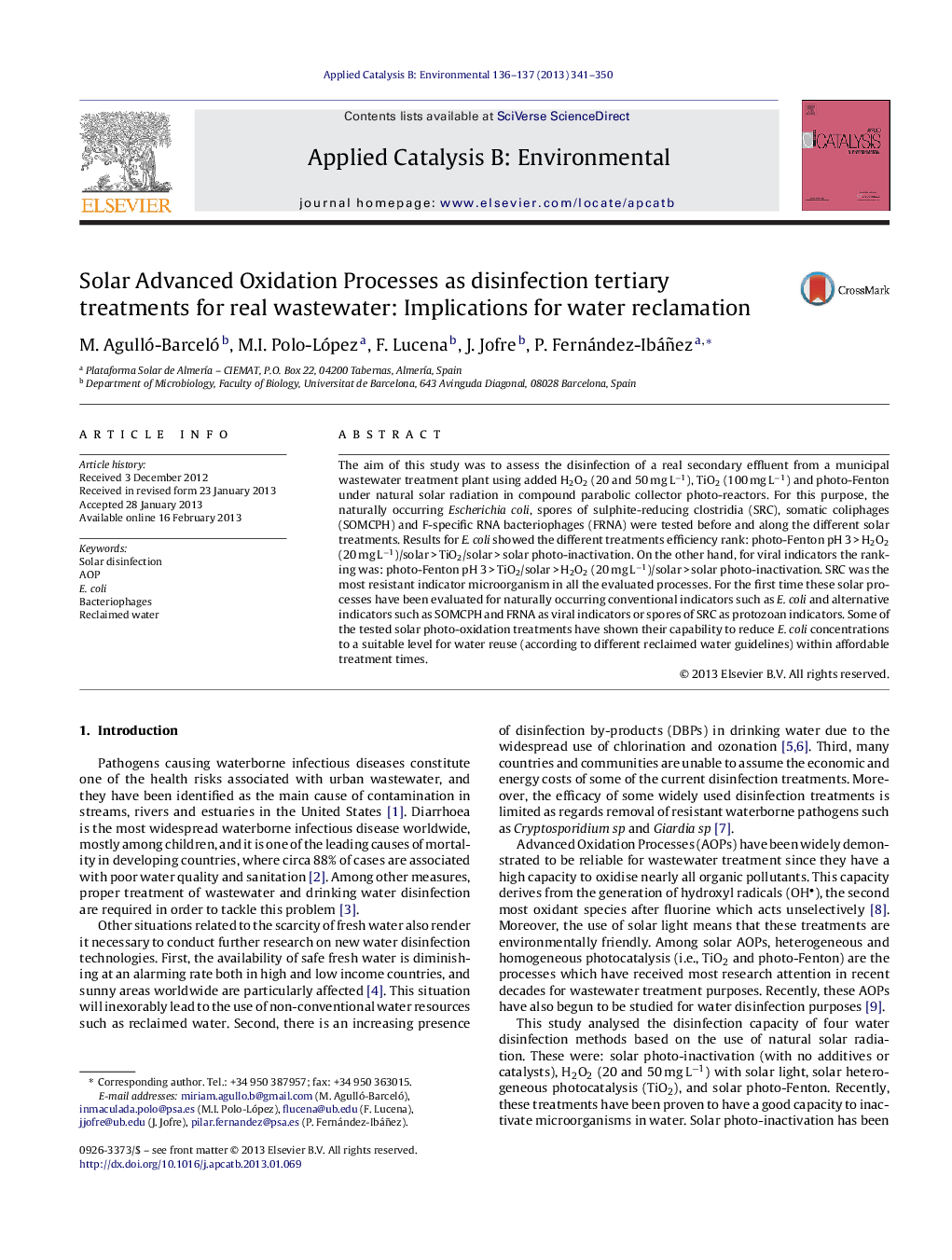| کد مقاله | کد نشریه | سال انتشار | مقاله انگلیسی | نسخه تمام متن |
|---|---|---|---|---|
| 46343 | 46437 | 2013 | 10 صفحه PDF | دانلود رایگان |

The aim of this study was to assess the disinfection of a real secondary effluent from a municipal wastewater treatment plant using added H2O2 (20 and 50 mg L−1), TiO2 (100 mg L−1) and photo-Fenton under natural solar radiation in compound parabolic collector photo-reactors. For this purpose, the naturally occurring Escherichia coli, spores of sulphite-reducing clostridia (SRC), somatic coliphages (SOMCPH) and F-specific RNA bacteriophages (FRNA) were tested before and along the different solar treatments. Results for E. coli showed the different treatments efficiency rank: photo-Fenton pH 3 > H2O2 (20 mg L−1)/solar > TiO2/solar > solar photo-inactivation. On the other hand, for viral indicators the ranking was: photo-Fenton pH 3 > TiO2/solar > H2O2 (20 mg L−1)/solar > solar photo-inactivation. SRC was the most resistant indicator microorganism in all the evaluated processes. For the first time these solar processes have been evaluated for naturally occurring conventional indicators such as E. coli and alternative indicators such as SOMCPH and FRNA as viral indicators or spores of SRC as protozoan indicators. Some of the tested solar photo-oxidation treatments have shown their capability to reduce E. coli concentrations to a suitable level for water reuse (according to different reclaimed water guidelines) within affordable treatment times.
Figure optionsDownload as PowerPoint slideHighlights
► We assess the disinfection of a real secondary effluent using solar AOPs.
► We provide novel results on their effects in naturally occurring microorganisms.
► A single microbial indicator may not be enough to guarantee a low risk of infection.
► Viral indicators were more sensitive to TiO2/solar than bacterial indicators.
► Photo-Fenton would provide high quality reclaimed water in a very short time.
Journal: Applied Catalysis B: Environmental - Volumes 136–137, 5 June 2013, Pages 341–350